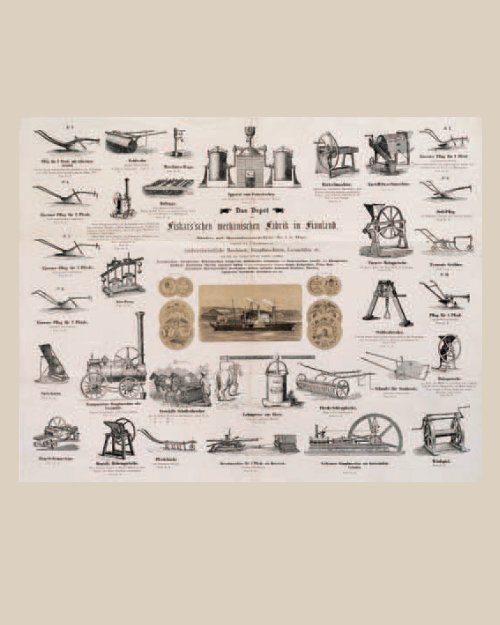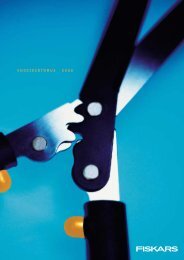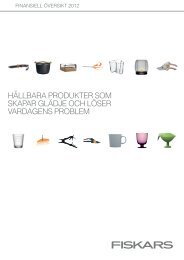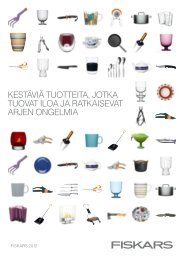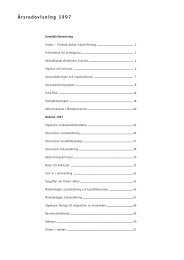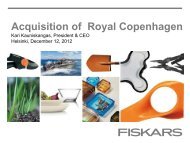FISKARS 1649 â 360 years of Finnish industrial history
FISKARS 1649 â 360 years of Finnish industrial history
FISKARS 1649 â 360 years of Finnish industrial history
You also want an ePaper? Increase the reach of your titles
YUMPU automatically turns print PDFs into web optimized ePapers that Google loves.
Fiskars <strong>1649</strong><br />
Fiskars <strong>1649</strong><br />
Late 1800s<br />
Fiskars becomes a joint stock company <strong>of</strong> worldwide renown<br />
In 1865 Finland acquired its own currency, the<br />
mark. The <strong>years</strong> <strong>of</strong> severe famine in 1867–<br />
1868 had put a strain on the whole country.<br />
In the 1870s, <strong>industrial</strong>ization and urbanization<br />
accelerated, boosted by the full business freedom<br />
gradually granted between 1858 and 1879. The<br />
first electrically powered bamboo fibre filament<br />
lamp was lit in 1852. The telephone was invented<br />
in 1875 and the precursors <strong>of</strong> the modern internal<br />
combustion engine were introduced in 1886.<br />
Fiskars has played an important role in the<br />
development <strong>of</strong> <strong>Finnish</strong> agriculture. Different<br />
ploughs were imported for experiments with<br />
ploughing, and a plough suitable for the <strong>Finnish</strong><br />
soil was developed on this basis. Ploughs became the<br />
works’ most important line <strong>of</strong> products. At the 1860<br />
St Petersburg exhibition, Fiskars’ wooden plough<br />
won an award. By 1891 the works was producing<br />
11 different ploughs, and by the end <strong>of</strong> the century<br />
the range had been extended to 40 models. In all,<br />
over a million horse-drawn ploughs were made.<br />
Fiskars was also a pioneer in occupational health<br />
care. The mill had its own physician as early as 1860.<br />
In 1892, the mill opened a hospital with ten beds on<br />
the eastern shore <strong>of</strong> Ålsviken bay.<br />
After the death <strong>of</strong> J.J. Julin in 1853, the works<br />
was managed by a guardianship administration,<br />
the ‘Ironworks Company John von Julin’. Power<br />
gradually became consolidated in the hands <strong>of</strong><br />
Emil Lindsay von Julin, however, and the Fiskars<br />
Fiskars machinery workshop´s catalogue from 1860s.<br />
34<br />
35


